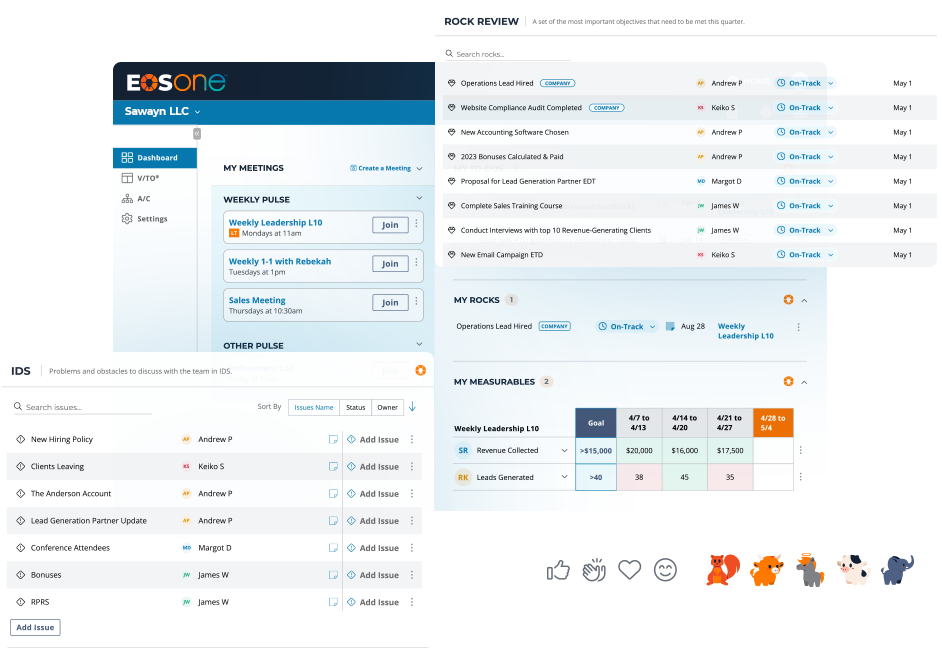Ken Blanchard, a famed leadership expert, planted a seed within me a couple decades ago that has guided my work as a leader: Leadership is working with people to accomplish their goals and the goals of the organization. As I lived into this definition, another key idea hit me: Trust is a gift, and without it leaders too often rely on fear to motivate their teams.
The reality is that, while fear works as a short-term motivator, including people in setting goals and creating plans to accomplish those goals is more effective in the long-term. By including your team in the planning process, you can start to create a culture that oozes trust, excitement and ownership that ultimately makes your job as a leader easier.
Understanding What “Planning” Means
Over the years, many leaders became acquainted with “planning” looking like your team walking into a room and sitting through a PowerPoint presentation of the plan, followed by questions and maybe a small discussion.
That isn’t a planning session. I would even argue that something like that is more accurately a “telling” session, and it’s far less productive than opening up an honest discussion with your team. Each member of your team might bring important information and insights that should be considered at the beginning of the planning process, not after you’ve given it hours of thought and already decided on a strategy.
How to Start Planning with Your Team
You’d be amazed how much knowledge can be gained by asking questions! Through their time with you and elsewhere in their careers, they’ve each gathered insights you may not have even considered. Here are a couple questions that can help you and your teams kick off your planning process.
Question 1: What are we trying to achieve?
This first question most often comes from leaders. Sometimes it’s what you see as the greater end-goal, or maybe you’re gathering the goals of your customers, the members of your organization, a board, or even an executive team. It could be a number (i.e. revenue, or an increased number of clients), a list of things that your team needs to complete, or it could be a plan to start down an entirely new path.
The single rule is that your final goal must provide absolute clarity for the people tasked with achieving it. If you’re handing a big goal to a team, a great exercise might be to ask: For us to achieve this, what else has to be true?
Question 2: What is the current state?
In his book Good to Great, Jim Collins introduced us to the term “brutal facts” in what he called the Stockdale Paradox:
“Every good-to-great company faced significant adversity along the way to greatness, of one sort or another. … In every case, the management team responded with a powerful psychological duality. On the one hand, they stoically accepted the brutal facts of reality. On the other hand, they maintained an unwavering faith in the endgame, and a commitment to prevail as a great company despite the brutal facts. We came to call this duality the Stockdale Paradox.”
Once the target we are trying to achieve is clear, we must honestly assess our current performance, the capacity of our team, and capability of our product or service. Understanding, in the clearest and most honest terms, where we currently stand allows us to truly see what must change for us to achieve our goal.
Question 3: What are the key steps/work that we must complete to achieve the target?
The answer to this question creates our roadmap for the work, and it should be SMART (Specific, Measurable, Achievable, Results-oriented, and Time-bound). Once you’ve established the key steps that will help your team achieve their goal, you must decide on a specific person that will take ownership of each step’s completion.
There’s an expression about how, if two people are responsible for feeding the dog, the dog won’t get fed. In that example, both people assume that the other person is handling their joint responsibility, and so neither of them actually complete the necessary task.
By establishing a sole person responsible for each task, you greatly increase the chances that they’ll complete the work and provide frequent, honest updates to the team on their progress or areas where they may need help.
Question 4: What are the key questions that need to be answered for us to increase our certainty to 90% that we will successfully achieve this goal?
Most of us have heard of Winnie the Pooh, either from our childhoods or through our children. One of the main characters, Eeyore, is famous for his eternally pessimistic outlook and, oftentimes, brutal honesty. While this approach often dampered the moods of the other characters, he also brought a clear perspective that everyone else would otherwise easily ignore.
Every plan has to invite pessimism as a way of understanding which barriers or risks we need to address. Maybe 90% isn’t the right number for your organization, but pick a number that reflects the risk tolerance of the team and use it to manage your risk. Don’t be afraid to adjust that number as you learn more. Ultimately it will drive you to either think bigger or abandon a goal that has no ROI for your business.
Building on a Foundation of Trust
Involving your team in planning isn’t just another leadership exercise. This work can greatly increase trust within your team, going in both directions.
In his 2017 Harvard Business Review Article, “The Neuroscience of Trust,” Paul J. Zak explains his research around management behaviors that genuinely impact employee engagement. His research showed that employees in high-trust organizations are more productive, have more energy at work, collaborate better with their colleagues, and stay with their employers longer.
The article goes on to identify 8 management behaviors measured to increase trust in people. The top 3 might surprise you:
- Recognize excellence.
- Induce “challenge stress.”
- Give people discretion in how they do their work.
Can you see how planning and the discipline to follow the plan to completion hits all three of these? Planning provides a great tool to lead, and if you are not doing it with your team I challenge you to start at the earliest opportunity.
As an EOS Implementer, I work with 20+ leadership teams each year, and improved retention is a core goal in almost every organization’s plan. In my experience, this all starts with trust, both leaders trusting their teams and teams trusting their leaders. Use your next planning session to start building trust with your teams, and confidently head into the new year with your plan in hand!
Interested in reading the whole Harvard Business Review Article: The Neuroscience of Trust? I am giving away copies to the first 10 leaders that email me at [email protected]


